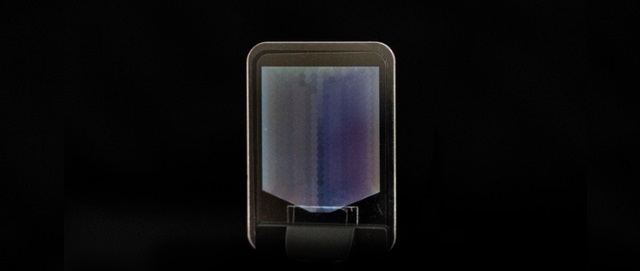In January of this year, Hay Think announced the good news that SHYC Optical Technology Group has successfully developed an ultra-thin two-dimensional diffractive waveguide mirror that can be mass-produced, and at the same time briefly introduced the diffractive optical waveguide technology. However, just in May of this year, Snap acquired WaveOptics, an AR waveguide display manufacturer, for $500 million+. This move means that there is one less company that has mass-produced two-dimensional diffractive waveguide lens technology, which is really impressive. regret. So in this issue, let`s take an in-depth analysis of the mass-produced two-dimensional diffractive waveguide lens developed by SHYC to see what it is so extraordinary!
Diffractive optical waveguide technology is divided into one-dimensional expansion and two-dimensional expansion. Many products such as the first and second generations of Microsoft HoloLens and Magic Leap One that we are familiar with all adopt the one-dimensional grating diffractive optical waveguide solution. With a reasonable design of the grating structure, the diffractive optical waveguide technology can realize a two-dimensional pupil dilation scheme.
The mass-produced ultra-thin two-dimensional diffractive waveguide mirror developed by SHYC adopts a two-dimensional grating and two-dimensional pupil expansion scheme, which has a large visual range, and the thickness of a single piece is only 0.6mm, and the transmittance is more than 85%. High manufacturability and easy mass production. This lens will become a key component of a lightweight augmented reality near-eye display, which can provide a variety of scene customization solutions for the AR glasses that SHYC continues to develop and support a full-color augmented reality experience. So, what are the advantages of two-dimensional gratings compared to one-dimensional gratings?

The grating diffraction waveguide lens is divided into three areas: entrance area, expansion area and exit pupil area. If a one-dimensional grating diffractive waveguide lens is used, the imaging area we can see through the lens is limited to the exit pupil area, and the visible range is relatively small; and if a two-dimensional grating diffractive waveguide lens is used, then our visible The area is the exit pupil expansion area. Obviously, the entire visible area of the two-dimensional grating diffractive waveguide lens has become larger.

Of course, it is not only the expansion of the visible area, but also three major advantages. Now I will elaborate on each of you.
First, its focal length is infinite. For ordinary AR glasses on the market, the imaging distance of the virtual image we see through the lens is not infinite, so long-term viewing will cause discomfort such as eye fatigue. The infinite focal length means that the imaging distance is far, just like looking at the sky, and long-term viewing will not cause discomfort and make people more relaxed. Moreover, the imaging content in the lens will not move due to the change of the viewer's position, and the interpupillary distance adaptability is good, so that the virtual imaging can be more accurately superimposed with the real position.
Secondly, in the common BirdBath optical solutions on the market, the EyeBox size is usually 4mm x 6mm, while the EyeBox size of this lens is 30mm x 20mm, and the eye movement range has been improved by orders of magnitude. The expansion of the EyeBox size allows users to see clear images no matter how small the parallel movement of the glasses is.
Finally, the exit pupil distance of common AR glasses on the market that we are familiar with is 8-10mm, and the exit pupil distance of this lens can reach 30mm, which means that even if the lens is far away from the eye, users can easily see AR. The virtual imaging content in the glasses can adapt to more application scenarios.
About SHYC
SHYC specializes in the basic sciences of mixed reality, artificial intelligence and semiconductor, as well as the development of applied technologies and products.
The core research team is postdoctoral researchers and Ph.D. students, who are from Cambridge University, Stanford University, Texas A&M University, Peking University, Tsinghua University, Shanghai Jiao Tong University, and other world-renowned universities. The majority have the working experience in ASML, Siemens, Huawei, Longqi and other world-class technology companies. It also has become the largest customer and technology partner with the Qualcomm Group in XR (Extended Reality) area.
It persists in developing technology, researches, and products independently to create the new kinetic energy with new technology, and create the new economy with the new kinetic energy. Existing products of the company include self-developed multi-chips, advanced optical lenses, and world-leading artificial intelligence algorithms.
The smart glasses that have been widely applied in education, industry, medical, cultural tourism, exhibition, and other areas. These products get great economic benefits and social feedback. It is a mixed reality (MR) smart glasses company with the largest shipments in China.

